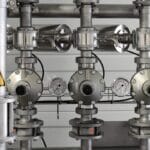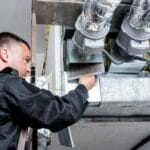When the temperature drops, a reliable heating system becomes the heart of a comfortable home. Exploring the different types of home heating systems not only helps in making an informed decision for your household needs but also ensures that you choose the most efficient and cost-effective option. From traditional furnaces and boilers to innovative heat pumps and radiant floors, each system offers unique benefits and challenges. This article delves into the various heating technologies, providing insights into their operations, advantages, and considerations to help you select the perfect warmth provider for your abode.
Key Takeaways
- Forced-air systems are popular due to their quick heating ability, but require regular maintenance to ensure efficiency and air quality.
- Furnaces are versatile heating options, with various types available; selecting the right one depends on fuel preference and home size.
- Heat pumps offer an energy-efficient alternative to traditional heating systems, suitable for mild to moderate climates and can also provide cooling.
- Radiant heating systems, such as floor heating and electric panels, provide consistent warmth and can be more energy-efficient than forced-air systems.
- Choosing the right thermostat is crucial for maximizing efficiency and managing the operation of your heating system, with smart thermostats offering additional energy savings.
Understanding Forced-Air Heating Systems
Forced-air heating systems circulate warm air throughout the house, using a system of ducts. This common central heating option can quickly warm your residential home. It can use different energy sources, including gas heating or electric resistance heating systems.
Components of a Forced-Air System
A forced air system is a type of HVAC system that includes several key components working together to heat and distribute air throughout a home. At the heart of the system is a furnace or heat pump that heats the air. This air is then circulated through a network of ducts that deliver the warm air to different rooms.
The thermostat is the control hub for the system, allowing users to set and regulate the temperature. Additionally, forced air systems often share ductwork with air conditioning systems, making them versatile for both heating and cooling needs.
Key components of a forced air system include:
- Furnace or heat pump
- Ductwork
- Vents and registers
- Thermostat
- Air filter
Each part plays a crucial role in ensuring the system operates efficiently and effectively. Regular maintenance is essential to keep the system running smoothly and to extend its lifespan.
Advantages and Disadvantages
Forced-air heating systems are popular for their quick heating capabilities and ability to filter and humidify the air. However, they can be less energy-efficient than other options and may distribute allergens throughout the home.
Advantages include:
- Quick distribution of heat
- Air filtration and humidification options
- Compatibility with central air conditioning systems
Disadvantages are:
- Potential for uneven heating
- Noise from air movement and equipment
- Regular maintenance of filters and ducts
While the initial cost and installation complexity can be higher, the long-term energy savings and comfort provided by forced-air systems are significant. It’s important to weigh these factors against your specific needs and preferences.
Maintenance Tips
Keeping your forced-air heating system in top condition is essential for efficiency and longevity. Schedule regular maintenance to prevent unexpected breakdowns and costly heating repairs. This should include cleaning air ducts, replacing air filters, and checking refrigerant levels. Here are some key steps to follow:
- Clean or replace air filters every 1-3 months to ensure proper airflow.
- Inspect and clean air ducts annually to prevent blockages and maintain air quality.
- Check refrigerant levels and system pressures to keep the system running efficiently.
Remember, while some tasks can be DIY, it’s often best to seek professional help for complex issues. Regular maintenance not only extends the lifespan of your HVAC system but also supports environmental sustainability by enhancing energy conservation.
The Ins and Outs of Furnace-Based Heating
Furnace-based heating is a popular choice to keep your home warm. These systems heat air and distribute it through the home via ducts. They can run on gas, electric, or wood heating, offering versatility for your primary home heating needs.
 Types of Furnaces
Types of Furnaces
When selecting a type of home heating system, it’s essential to understand the different types of furnaces available. The most common type of home heating is the gas furnace, known for providing a warmer heat due to higher temperatures achieved by burning gas. However, it’s crucial to ensure proper venting to prevent carbon monoxide and other fumes from affecting indoor air quality.
- A gas furnace is prevalent in many homes and requires a flue for exhaust and ventilation pipes.
- Propane furnaces operate similarly to natural gas furnaces but use propane as fuel.
- Electric, wood, propane, or oil furnaces are also available, each with unique installation and maintenance requirements.
Regardless of the type, furnaces are central to a home’s heating and cooling system. They are typically installed out of sight and need regular maintenance to ensure efficient and safe operation. When considering a new furnace, factor in the compatibility with your existing heating and cooling infrastructure and the potential impact on your home’s appearance due to necessary ventilation.
Selecting the Right Furnace for Your Home
Choosing the right furnace for your home is crucial for ensuring comfort, efficiency, and cost-effectiveness. Consider your local climate as it greatly influences the heating power required. In colder regions, a more robust system is necessary, while milder climates may benefit from a less powerful unit.
Evaluate your home’s insulation and ductwork. Efficient insulation reduces heat loss, and well-maintained ducts distribute heat evenly, preventing energy waste. Here are some steps to guide you:
- Assess your home’s square footage and layout.
- Check for existing insulation and ductwork quality.
- Determine the furnace capacity needed based on climate and home size.
Remember, financial incentives may also impact your decision. Research local rebates or tax credits for energy-efficient furnaces. Lastly, consider whether you’ll install the furnace yourself or hire professionals, balancing your skill level against the complexity of the installation.
Safety Considerations
When selecting a furnace for your home, safety should be a paramount concern. To ensure proper equipment installation and maintenance, it’s crucial to follow these guidelines:
- Schedule regular professional inspections to catch potential hazards early.
- Check and replace air filters regularly to maintain air quality and prevent fire risks.
- Ensure proper ventilation to avoid dangerous gas build-ups.
Adopting smart HVAC technologies can also enhance safety by providing features like automatic shut-offs in case of malfunctions. Remember, a well-maintained furnace not only keeps your home warm but also ensures the well-being of its occupants.
Heat Pumps: An Efficient Alternative
Heat pumps provide both heating and cooling for your home, making them a versatile option. They work by moving air throughout the home and are known for their high heating season performance factor, making them an efficient choice.
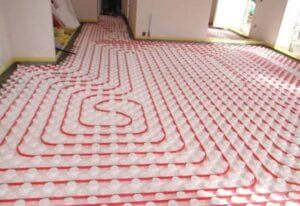 How Heat Pumps Work
How Heat Pumps Work
Heat pumps are a highly efficient means to heat and cool homes, using electricity to transfer heat between the indoors and outdoors. They absorb heat from the air, ground, or water outside your home and transfer it inside, reversing the process in summer to cool your home. This system can lead to substantial savings on heating bills.
- Air-source heat pumps are common due to their versatility and ease of installation.
- Ground-source heat pumps harness heat from the ground and are known for their high efficiency.
- Water-source heat pumps extract heat from water bodies and require access to a lake, well, or similar source.
Each type of heat pump has its unique installation requirements and benefits, making it crucial to evaluate your home’s location, climate, and heating needs before choosing the most suitable option.
Comparing Heat Pump Types
Heat pumps are a versatile and efficient heating solution, with several types available to suit different climates and home sizes. Air-source heat pumps are the most common and work by transferring heat between the inside and outside of your home. They are particularly effective in moderate climates where temperatures rarely dip below freezing.
Ground-source, or geothermal heat pumps, draw heat from underground and are known for their high efficiency. They require a significant initial investment but can lead to substantial energy savings over time. When comparing heat pump types, consider the climate you live in and the size of your home to determine the best fit.
In addition to these, some heat pumps come with integrated resistance heat to provide backup heating when temperatures are too low for the heat pump to operate efficiently. This feature can ensure consistent comfort even in colder regions. However, relying on resistance to heat can increase energy consumption, so it’s important to evaluate the balance between efficiency and heating needs.
Integrating with Existing Systems
When considering the integration of heat pumps with existing systems, it’s essential to evaluate compatibility. Heat pumps can often be used in conjunction with natural gas furnaces to create a hybrid heating system. This combination allows for efficient heating system operation in various weather conditions.
- Heat pumps provide the primary heat source during milder temperatures.
- The natural gas furnace serves as supplemental heat during extreme cold.
Such hybrid systems offer a balance between efficiency and comfort. Additionally, integrating solar heating systems can further enhance efficiency, reducing reliance on traditional energy sources. It’s crucial to consult with a professional to ensure seamless integration and optimal performance of your heating system.
Radiant Heating Solutions
Radiant heating systems, including in-floor radiant heating systems, offer warmth directly from the floor or panels in the walls or ceilings. This method is efficient, distributing heat evenly throughout the home without circulating dust.
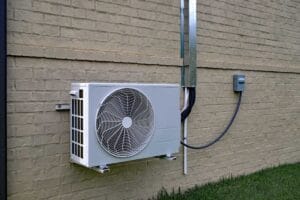 Exploring Radiant Floor Heating
Exploring Radiant Floor Heating
Radiant floor heating offers a discreet yet effective way to distribute radiant heat throughout the house. This system can be installed under various types of flooring, providing a consistent warmth that rises from the ground up.
- In-floor radiant heating systems use a network of tubes or electric wires beneath the floor surface.
- These systems are energy efficient and can be powered by electricity or connected to solar panels for an eco-friendly option.
- Unlike baseboard heating, radiant floor heating eliminates cold spots and drafts, ensuring even heat distribution.
When considering radiant floor heating, it’s important to weigh the initial installation costs against the long-term comfort and efficiency benefits. This heating method is particularly well-suited for new construction or during major renovations.
Benefits of Electric Radiant Panels
Electric radiant panels offer a modern and efficient way to heat your space. They provide comfortable heat by warming objects directly, which can lead to lower utility bills due to reduced energy consumption. These panels are known for their sleek design, adding an aesthetic appeal to any room without taking up floor space.
Installation is straightforward, and once in place, they require minimal maintenance. Many models are compatible with smart control systems, allowing for easy temperature regulation. Additionally, electric radiant panels are beneficial for health as they do not circulate dust and allergens like forced-air systems.
- Versatile in design and installation
- Energy-efficient with potential for lower utility bills
- Enhances room aesthetics with a modern look
- Easy to control, often with smart technology
- Health-friendly by not circulating dust and allergens
Installation and Cost Analysis
When considering radiant heating solutions, the installation and overall costs of water heaters are significant factors. Initial expenses can vary widely, with factors such as the type of system, the size of the area to be heated, and the complexity of the installation playing a role.
- Budget constraints should be evaluated alongside performance and efficiency. Remember to account for both equipment and installation costs.
- Explore potential rebates or incentives that could reduce your upfront investment.
- Consider the long-term costs or savings, as maintenance expenses and energy efficiency will impact your finances over time.
Financing options and manufacturer rebates may make high-efficiency systems more attainable. Additionally, warranties can offer protection and add value to your property. Always weigh the initial outlay against the potential for long-term savings through reduced energy bills and maintenance costs.
Electric Heating Systems: Types and Tips
Electric heating systems, such as electric resistance systems and low-profile baseboard heating units, offer easy installation and can be used in many different types of heating scenarios. They’re best for areas where gas heating isn’t available.
 Overview of Electric Heating Options
Overview of Electric Heating Options
Electric heating systems are diverse, offering various options tailored to different needs and preferences. Electric panel heaters stand out for their eco-friendliness and efficiency, making them a top choice for homeowners and builders alike. These units can be a budget-friendly solution for smaller spaces or a complete heating solution for entire homes.
Key options include:
- Radiant Floor Heating: Ideal for whole-home heating.
- Electric Infrared Zone Heaters: An affordable choice for targeted heating.
- Electric Radiant Heat Panels: Offer design versatility with options for wall or ceiling placement.
Electric space heaters are similar in technology to panel heaters, providing quick and comfortable heat without taking up floor space. However, they may not offer the same level of design flexibility. When selecting an electric heating system, consider factors such as room size, design preferences, and whether the system is for supplemental or primary heating.
Evaluating Electric Panel Heaters
Electric panel heaters are a sleek and efficient choice for home heating. They offer rapid warmth and are easy to install, making them a popular option for many homeowners. These units are particularly beneficial for rooms that require quick and targeted heating without taking up floor space.
When selecting an electric panel heater, consider the following:
- The size of the unit should match the room’s dimensions for optimal efficiency.
- Look for models with smart control compatibility for ease of use.
- Assess the design and aesthetics to ensure they complement your home.
Electric panel heaters are not only about comfort but also about health and energy savings. They operate quietly and can reduce energy consumption, leading to lower utility bills. However, versatility in home design may be limited compared to other heating options. Always compare different models and check for features that suit your specific needs before making a decision.
Design Considerations for Electric Heaters
When integrating electric heaters into your home, design considerations are crucial for both aesthetics and functionality. Selecting the right electric heater involves balancing heating requirements with the layout and decor of the space. Here are some key points to consider:
- Placement: Electric heaters can be wall-mounted or freestanding, offering versatility in design. Consider the available space and traffic flow in the room to determine the best placement.
- Style: Electric heaters come in various styles, from sleek panel heaters to traditional baseboard models. Choose a design that complements your interior while providing the necessary heat output.
- Control and Customization: Look for heaters with adjustable settings and timers for ease of use and energy efficiency. Some models offer remote control operation, adding convenience and precision to temperature management.
Remember, the right electric heater not only provides warmth but also enhances the overall ambiance of your home.
Boilers and Hydronic Heating
Boilers and hydronic heating systems circulate hot water or steam through a system of water pipes or radiator systems to heat a home. This option provides even, comfortable warmth and can be powered by gas, electricity, or oil.
 Understanding Boiler Functionality
Understanding Boiler Functionality
Boilers are a cornerstone of home heating, functioning as part of a hydronic system. They operate by heating water, which is then circulated to emit warmth via radiators or underfloor heating. Here’s a simple breakdown:
- Fuel combustion occurs in the boiler, generating heat.
- This heat is transferred to water, turning it into hot water or steam.
- The heated water or steam travels through pipes to radiators or radiant floor systems.
- Heat is radiated into rooms, providing a comfortable environment.
Boilers are distinct from furnaces in that they use water as the heat-carrying medium, rather than air. This method of heating is known for its efficiency and even distribution of warmth. Additionally, boilers can supply hot water for daily use, integrating seamlessly with your home’s hot water needs.
Comparing Hot Water and Steam Boilers
When choosing between hot water systems and steam boilers, efficiency is a key factor. Hot water boilers typically offer greater efficiency over steam boilers. This is because hot water is easier to control, allowing for more precise heating without the losses associated with steam’s tendency to follow the path of least resistance.
- Hot water systems are often more cost-effective in the long run, despite higher initial costs.
- Steam boilers may be preferable in applications requiring high-temperature heat delivery or where existing infrastructure favors steam.
Professional consultation is recommended to navigate the technicalities and ensure the right fit for your needs. Consider your household’s hot water demand and available space when selecting a boiler type, as these factors will influence your choice and potential satisfaction with the heating system.
Maintenance and Efficiency Tips
To maintain the efficiency of your heating system, schedule regular maintenance checks. These checks can identify potential issues early, saving you from costly repairs and ensuring your system operates at peak performance. Here are some essential tips:
- Regularly clean the boiler to prevent clogs and maintain efficiency.
- Check and replace filters as needed to ensure clean airflow and reduce strain on the system.
- Inspect and service your system before the start of the heating season to avoid mid-winter breakdowns.
Remember, using fuel oil requires particular attention to the cleanliness of the system to prevent soot buildup. Professional servicing is recommended for complex tasks to avoid voiding warranties and to ensure safety. By following these guidelines, you can extend the lifespan of your heating system and enjoy a warm, comfortable home.
Ductless Heating Systems: Pros and Cons
Ductless mini-split systems are efficient and provide both heating and cooling without the need for extensive ductwork. They’re great for additions or homes without existing ducts but can be more expensive upfront.
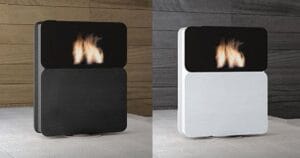 What Are Ductless Mini-Splits?
What Are Ductless Mini-Splits?
Ductless mini-split systems are a versatile heating and cooling solution, consisting of an outdoor compressor and one or more indoor units. These systems are ideal for homes lacking ductwork, as they require no extensive installation of air ducts. Instead, a small hole in the wall for the conduit is all that’s needed, making the setup process minimally invasive.
Mini-splits offer several benefits:
- Targeted temperature control for individual rooms
- Enhanced energy efficiency due to the absence of ducts
- Less visible and audible than traditional HVAC systems
However, there are considerations to keep in mind. The indoor units, while compact, are more visible than ducted systems and can affect interior aesthetics. Additionally, while mini-splits are effective in moderate climates, their performance may vary in extreme temperatures. It’s important to assess both the advantages and disadvantages of ductless mini-splits to determine if they align with your home’s needs and design preferences.
Assessing the Suitability for Your Home
When considering a ductless heating system for your home, it’s essential to evaluate several factors to determine if it’s the right choice. Older homes, for instance, may benefit greatly from ductless systems, especially if they lack existing ductwork.
- Climate: The efficiency of a ductless system can vary depending on your local climate. In areas with extreme temperatures, the system may need to work harder, affecting energy consumption.
- Home Size and Layout: The size and layout of your home will influence the type and number of units required. Ductless systems are particularly advantageous for controlling temperatures in individual rooms or areas.
- Energy Efficiency: Ductless systems can offer improved energy efficiency over traditional HVAC systems. However, the actual savings will depend on the specifics of your home and usage patterns.
- Budget: Upfront costs for ductless systems can be higher than traditional systems, but long-term savings on energy bills should also be considered.
By carefully weighing these factors, you can make an informed decision on whether a ductless heating system aligns with your home’s needs and your personal preferences.
Installation and Operating Costs
When evaluating the pros and cons of heating systems, installation and operating costs are pivotal. Initial costs can vary widely, with factors like system type and home layout influencing the price. For instance, a mini-split heat pump system may be more budget-friendly for homes without existing ductwork.
- Long-term savings should also be considered. While some systems have higher upfront costs, they may offer greater energy efficiency, leading to reduced utility bills over time.
Maintenance expenses are another key aspect. Regular tune-ups and filter replacements are necessary for peak performance, regardless of the system chosen. Exploring rebates or incentives can help mitigate some of these costs, making a seemingly expensive option more attainable.
Packaged Heating Systems Explained
Packaged heating systems consist of an outdoor unit that combines all components. These systems are often used in smaller homes or as a supplemental heating system. They’re compact and can be placed on a roof or near the home’s foundation.
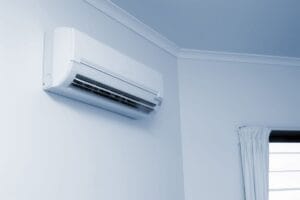 Defining Packaged Heating Units
Defining Packaged Heating Units
Packaged heating systems are all-in-one solutions that combine multiple components into a single unit. Typically installed outside the home, these systems can include an air conditioner, heat pump, and furnace, offering both heating and cooling capabilities. They are designed for efficiency and space-saving, making them ideal for homes with limited indoor space for separate systems.
- Gas & electric packaged systems are popular options, providing the convenience of electricity for air conditioning and gas for heating.
- These units are known for their high efficiency, often resulting in lower energy bills.
- Installation is generally simpler compared to split systems, as all components are housed together.
When selecting a packaged heating system, it’s important to consider the specific needs of your home, including climate, space availability, and energy preferences. Manufacturers like Trane offer a range of packaged systems, including options that combine high-efficiency air conditioning with gas furnace heating.
Advantages of Packaged Systems
Packaged systems offer a compact solution for home heating, combining all necessary components into a single outdoor unit. This design saves valuable indoor space and simplifies installation. With everything housed in one place, maintenance becomes more straightforward, and indoor noise is significantly reduced.
These systems are particularly beneficial for homes with limited space, either inside or outside. They also present an opportunity for a cleaner indoor environment, as the main heating unit is located outdoors. Moreover, packaged systems can be more energy-efficient, as they are designed and assembled in a controlled factory environment.
However, it’s important to note that their outdoor placement makes them vulnerable to weather conditions. Homeowners may need to invest in protective measures to ensure the longevity of the system, especially in areas with extreme weather.
Selecting the Right Package for Your Needs
When choosing a packaged heating system, consider the unique aspects of your home. These systems are compact and ideal for homes with limited space, combining all heating components into a single outdoor unit. Here are key factors to guide your selection:
- Assess your local climate; extreme conditions may require additional protection for outdoor units.
- Evaluate the size and layout of your home to ensure proper airflow and efficiency.
- Consider energy efficiency ratings to manage long-term costs.
- Balance your budget with the system’s features and expected performance.
Remember, working with an HVAC professional can provide valuable insights into the best system for your needs. They can analyze factors like climate and home layout to recommend a size and model that will serve you best.
Choosing the Right Thermostat for Your Heating System
The right thermostat can improve the efficiency of your heating system, whether it’s forced air, radiant, or hydronic. Modern thermostats can be programmed to match your schedule, saving energy and keeping your home warm efficiently.
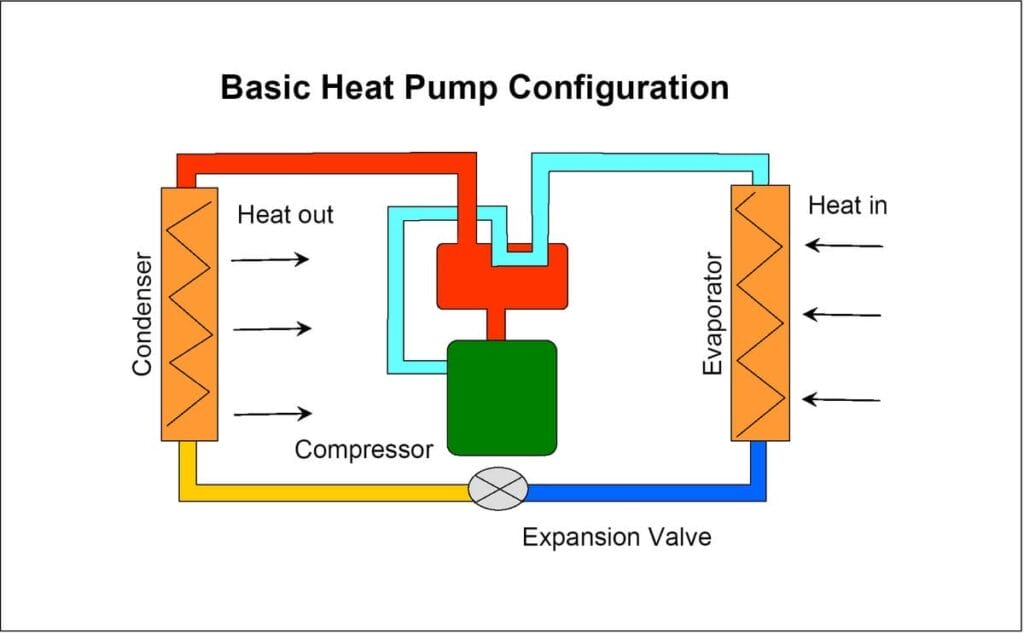
Types of Thermostats Available
Selecting the right thermostat is crucial for maximizing the efficiency of your type of heating system. There are primarily three types of thermostats to consider:
- Smart Thermostats: These advanced devices offer precise temperature control and learning capabilities. They can adapt to your habits, optimizing your home’s heating and cooling efficiency over time.
- Traditional Thermostats: The conventional choice, these thermostats provide basic functionality without the bells and whistles of smart technology.
- Zoning Systems: Ideal for homes with varying temperature needs in different areas, zoning systems allow for individualized control of heating in separate zones.
Smart thermostats, in particular, have revolutionized home comfort with features like remote control through Wi-Fi, integration with other smart home devices, and the ability to monitor and adjust your HVAC system from anywhere.
Compatibility with Different Heating Systems
Selecting the right thermostat involves understanding the specific requirements of your heating system. Thermostats vary in functionality and design, catering to different types of heating setups. For instance, some are compatible with multi-stage systems, while others are better suited for single-stage units.
- Programmable thermostats can optimize heating schedules, potentially reducing energy consumption.
- Smart thermostats offer remote control and adapt to your heating habits over time.
- Non-programmable thermostats provide basic functionality without the need for complex programming.
It’s crucial to check the compatibility of a thermostat with your heating system to ensure efficient operation. Manufacturers often provide a compatibility chart or tool to help you match their products with your system’s specifications.
Smart Thermostats and Energy Efficiency
Smart thermostats are revolutionizing home heating with their advanced features. They optimize energy usage by learning your schedule and adjusting temperatures accordingly. This leads to significant energy savings and a more comfortable living environment.
Key features of smart thermostats include:
- Precise temperature control
- Learning capabilities to adapt to habits
- Remote control through Wi-Fi
By integrating with other smart home devices, these thermostats offer enhanced automation and control. Upgrading to a smart thermostat can lower your environmental impact and reduce energy bills.
Final Considerations Before Choosing a Heating System
Before deciding on a new heating system, consider your home’s size, climate, and existing infrastructure. Active solar heating systems and modern in-floor radiant heating are excellent for new constructions, while ductless systems may be best for older homes and apartments without ductwork.

Assessing Your Home’s Heating Needs
Before selecting a home heating system, it’s crucial to evaluate your specific needs. Start by considering the climate in your area; this will influence the type and intensity of heating required to comfortably heat your home.
Next, assess the size and layout of your home. Larger spaces may need more powerful systems, while smaller ones could benefit from simpler solutions. Energy efficiency is another key factor; a more efficient system can reduce long-term costs and is better for the environment.
Finally, align your choices with your budget. While upfront costs are important, also consider the long-term operating expenses. By carefully evaluating these aspects, you’ll be better equipped to choose the right heating system for your home.
Environmental Impact and Sustainability
Choosing a heating system with a low environmental impact is crucial for sustainability. Eco-friendly HVAC systems significantly lower the ecological footprint of your home, aligning with global energy transitions towards net zero emissions. Here are key considerations:
- Opt for systems that enhance energy efficiency, reducing utility bills and conserving resources.
- Consider technologies like heat pumps that use renewable energy sources.
- Regular maintenance can prolong system life and optimize performance, further supporting environmental goals.
Investing in energy-efficient HVAC options not only contributes to a healthier planet but also offers long-term economic benefits. As technology advances, integrating smart HVAC technologies can lead to even greater energy conservation.
Budgeting for Installation and Long-Term Costs
Budgeting effectively for a heating system requires a comprehensive view of both initial and ongoing expenses. Installation costs can be significant, but they vary widely based on the system type and complexity of the setup. Consider the following:
- Investigate potential rebates or incentives offered by utility companies or government entities.
- Factor in the cost of regular maintenance to ensure system longevity and efficiency.
Long-term costs are equally important. Some systems, like heat pumps, may offer energy savings over time, but this depends on factors such as utility rates and the relative cost of energy sources like natural gas versus electricity. To manage long-term costs:
- Assess the energy efficiency of each system and how it translates to your utility bills.
- Consider the potential for smart HVAC technologies to reduce energy consumption and costs.
Remember, an upfront investment in a more efficient system can lead to substantial savings in the long run.
Conclusion
In summary, the exploration of home heating systems has revealed a diverse range of options suitable for different needs and preferences. From the traditional warmth of furnaces and boilers to the innovative efficiency of heat pumps and electric heating units, each system offers unique advantages and potential drawbacks. As we transition towards more eco-friendly solutions, electric heating systems are gaining popularity for their efficiency and design versatility. Regardless of the choice, safety measures and proper maintenance are paramount for any heating system to ensure a cozy and secure environment. Homeowners are encouraged to consider their specific requirements, including budget, space, and environmental impact, when selecting the most appropriate heating system for their home.
Q: What are the different types of home heating systems available?
A: There are various types of home heating systems to choose from, including central heating systems, wood heating, electric resistance heating, radiator systems, in-floor radiant heating systems, ductless mini-split systems, and gravity air furnace systems.
Q: How do I determine the right home heating system for my needs?
A: To determine the right home heating system for your needs, consider factors such as the size of your home, your heating preferences, energy efficiency requirements, and budget constraints. It is recommended to consult with a professional HVAC specialist to assess your specific requirements.
Q: What is the difference between a hybrid heating system and in-floor radiant heating?
A: A hybrid heating system combines two different types of heating sources, such as a heat pump and a furnace, to provide efficient heating. In contrast, in-floor radiant heating uses a series of tubes or electric cables installed beneath the floor to heat the space evenly.
Q: Can active solar heating be a viable option for residential home heating?
A: Active solar heating systems use solar collectors to capture and convert sunlight into heat, which can then be used to heat a home. While it can be a sustainable and cost-effective option, its effectiveness may depend on the climate and location of the residence.
Q: What are the benefits of using an HVAC system for home heating?
A: HVAC systems, which stand for heating, ventilation, and air conditioning, provide both heating and cooling solutions for residential homes. They offer versatility, energy efficiency, and the ability to maintain a comfortable indoor environment throughout the year.
Q: How do central heating systems circulate heat throughout a house?
A: Central heating systems distribute heat through ductwork or pipes to different rooms in a house. The heated air or water is circulated through the ducts or pipes to provide consistent warmth throughout the living spaces.
Q: What are the advantages of using electric resistance heating systems?
A: Electric resistance heating systems are easy to install, operate quietly, and can be controlled individually for each room, providing personalized comfort. However, they may be less energy-efficient compared to other heating options.



